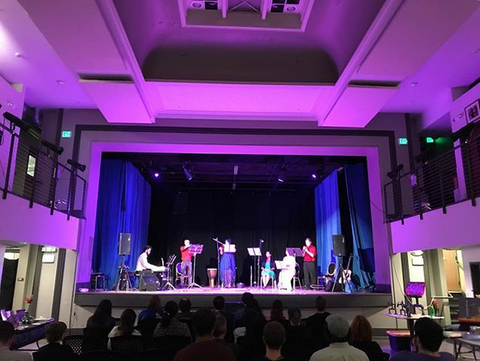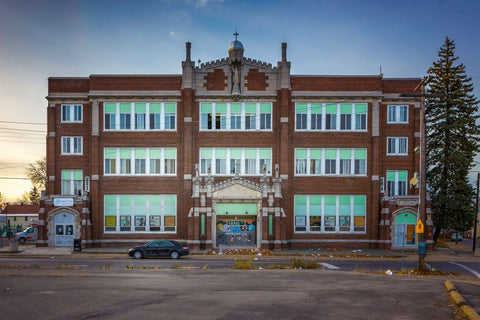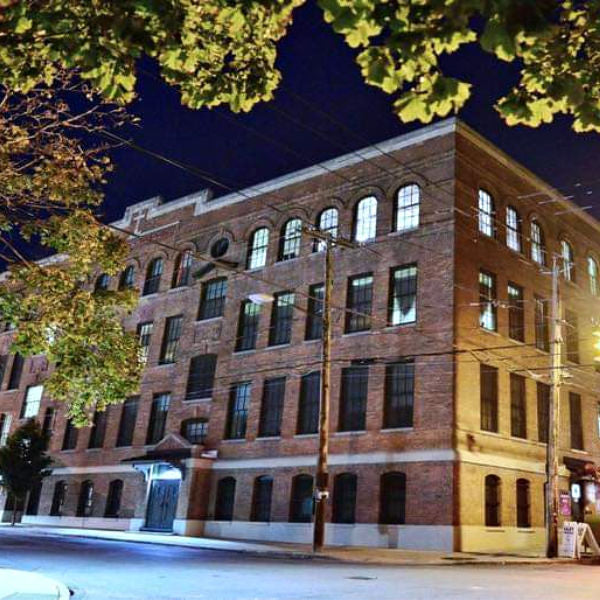Albany Barn. Photo: Albany Barn Facebook
One of the most vexing conundrums in the art world: the work buyers most desire few can afford, and the work widely available for artists pays less than anyone (but the independently funded) can live on.
According to depressing but dependable statistics, only 10% of art school grads actually make a living from their art.
“The relatively lower cost of living attracts a lot of creatives to our region,” explains Kristen Holler, executive director of the Albany Barn, a nonprofit dedicated to providing a sustainable living to artists in the Capital Region. “We’re still within traveling distance of several major metropolitan areas, which is a draw for artists trying to reach larger markets. And while it’s significantly less expensive to live here than New York City or Boston, it’s still difficult for artists to pay their bills, get to the next level of their career and then manage logistics when they’re given opportunities.”
Within the Capital Region alone, there are 35,618 jobs within what is loosely defined as the ‘creative industry’, Holler explains, citing an economic analysis commissioned by the Upstate Alliance for the Creative Economy. (And yes, the “official” description for the industry’s probably exactly what you’re thinking, running the gamut from traditional artists to architects, members of the media and artisans of all stripes).
So what is the Barn and what does it do, exactly? It has grown and evolved since 2004, when it first came into being as Rock2Rebuild. In 2004, a group of grassroots creatives collaborated to raise money for children and families devastated by the tsunami in South Asia, never once thinking of the ripple effects their project would have a decade-and-a-half down the line, right at home.
Rock2Rebuild was really just a series of acoustic concerts, staged at the Children’s Hospital at the Albany Medical Center, Holler says. But there was a groundswell of support, with 2,000 people attending, and funds of more than $26,000 raised. Since then, the beat hasn’t stopped. There are several components.
MUSIC
The Barn still has its roots in community events. Two of the region’s largest and most popular cultural events — the artisan-oriented street fair Arts on Lark bringing in 10,000 visitors a year and then live music show Lark Fest attracting 80,000 — are organized in part by the Barn, as is the reborn Summer in the City Youth Talent Exhibition.

A performance in Albany Barn. Photo: Albany Barn Facebook
THE SPACE
The Barn is more than an ideal generator: it’s also a physical structure, developed in partnership with the Albany Housing Authority and the City of Albany. The 13,500 square foot space at 56 Second Street, is located in the former St. Joseph’s Academy, an abandoned school in the center of the slowly revitalizing Arbor Hill neighborhood. Inside, there are 22 low-cost live and work residences, providing studio space and crash pads to creatives who aren’t generating enough income to pay market prices.
To qualify for one of their studio or one-bedroom apartments, new residents can’t make more than 50% of the area’s median income (the median income is $56,000, so residents can’t make more than $28,000), Holler says. Artist-residents are then expected to shell out 30% of their income for rent, which maxes out at $625 per month. After a year of residence, they are permitted to make more than the 50% cap.
Studio space, which includes WiFi and utilities, costs $1.25 per square foot, and they work month-by-month with certain organizations to accommodate their shifting needs.
“We have two in-house theater companies and their space needs change radically,” Holler explains. “Sometimes they just need an office, but then when they’re preparing for a show, they need rehearsal space. We try to be as flexible as possible.”
Right now, Holler says they have about 24 artists renting studio space.
WORKSHOPS, MENTORSHIP
Affordable rent and studio space is a step in the right direction, but Holler says the Barn sees their role in the arts community as being more holistic than simply providing funds and space for events and creatives.
“Many of the artists we work with are so busy working on current commissions, they don’t have time to line up their next project,” Holler says. “Or worse yet, they land a big project and don’t have the logistical means to see it through.”
The Barn now holds between 200 and 300 artist workshops annually to teach new skills, provide access to new technology and equipment and even more essentially, provide a network of mentors and fellow freelancers who can reach out to each other.
“I’ll give you an example,” Holler says. “Let’s say a small-scale fashion designer who works alone gets a big order, but they’re producing everything themselves. Now, they know they can reach out to us and we can hook them up with other freelance designers or small-scale manufacturing organizations who can help them seriously crank up their capacity.”
The Barn also helps connect artists with mentors willing to take them under their wings and teach them how to, say, turn a hunk or raw iron into a stunning fireplace grate.

Electric City Barn. Photo: Electric City Barn Facebook
LEGACY, THE FUTURE
The Barn has already helped some major talent along the way, though Holler bridles at taking credit for it.
“What we say here is: we provide a hand up, not a hand out,” she says.
Barn alum Jamel Mosley, founder of Mel eMedia has created video and photography for PUMA, Under Armour, HYPEBEAST and of course, his alma mater. The increasingly high-profile Albany artist Alex Waters is also a former Barner.
The Barn isn’t content “just” lifting up Albany, though. A second Electric City Barn recently opened in Schenectady.
It’s the same idea: an affordable creative hub where makers can afford to live, work and create, but this time, Holler says, they’re maxing out their capabilities in terms of training.
“We’ve created a metal shop, a wood-working studio, a place to design and construct fiber and textile art, a digital and electronics lab, a 3D printing lab, a stage for performances, a screen room for films,” Holler says, sounding as excited as a child who’s discovered a room full of puppies.


Leave a comment